Reaping the rewards of vine canopy management
27th July 2024
Efficient canopy management brings its rewards in clean quality fruit fit to make profitable wine; the challenge is to do it with low input costs.
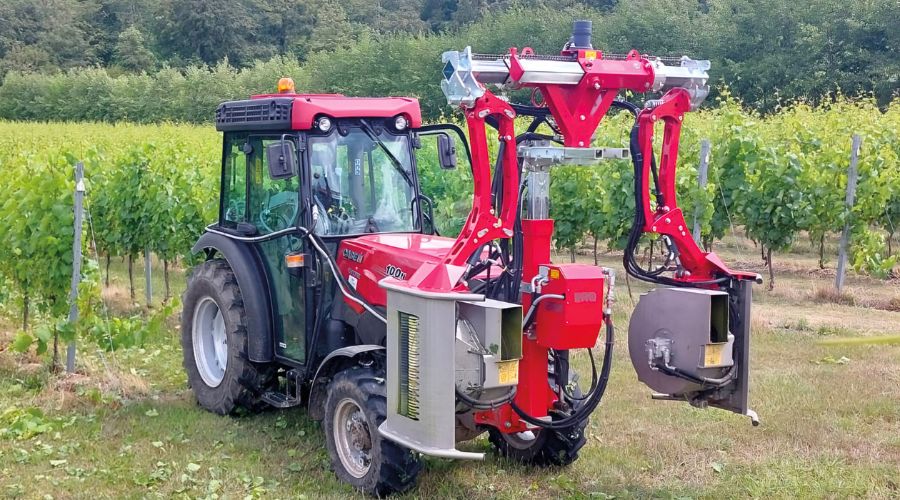
The world wine market is increasingly fragile, with French producers complaining about poor returns and limited, if any, support – so UK producers must remain vigilant and match, or even better, their competitive rivals.
A well-managed canopy has the benefit of enabling better spray penetration and disease control. More advanced spray equipment is also having a significant effect on grape quality, with many vineyards seeing the benefit of using recirculation sprayers such as the Lipco with accurate placement of spray through the entire height of the canopy, little or no expensive losses through drift, good environmental credentials, an annual saving of 30–40% on the chemical bill, and with a double row unit half the driver and tractor costs.
While canopy management can be expensive, it’s a vital part of the production process. Traditionally, much of the work has been done by hand. But as this is becoming more expensive and unjustifiable, other methods need to be explored.
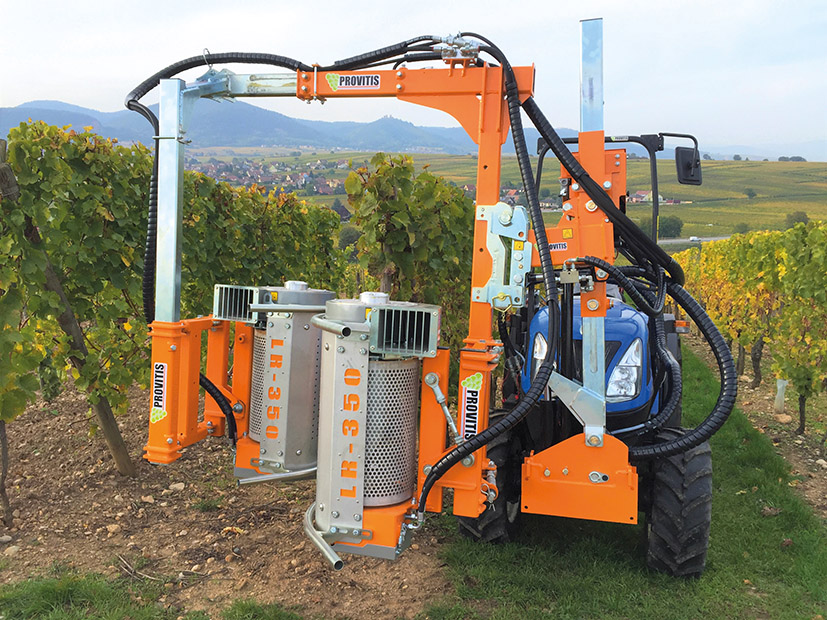
Buy or hire?
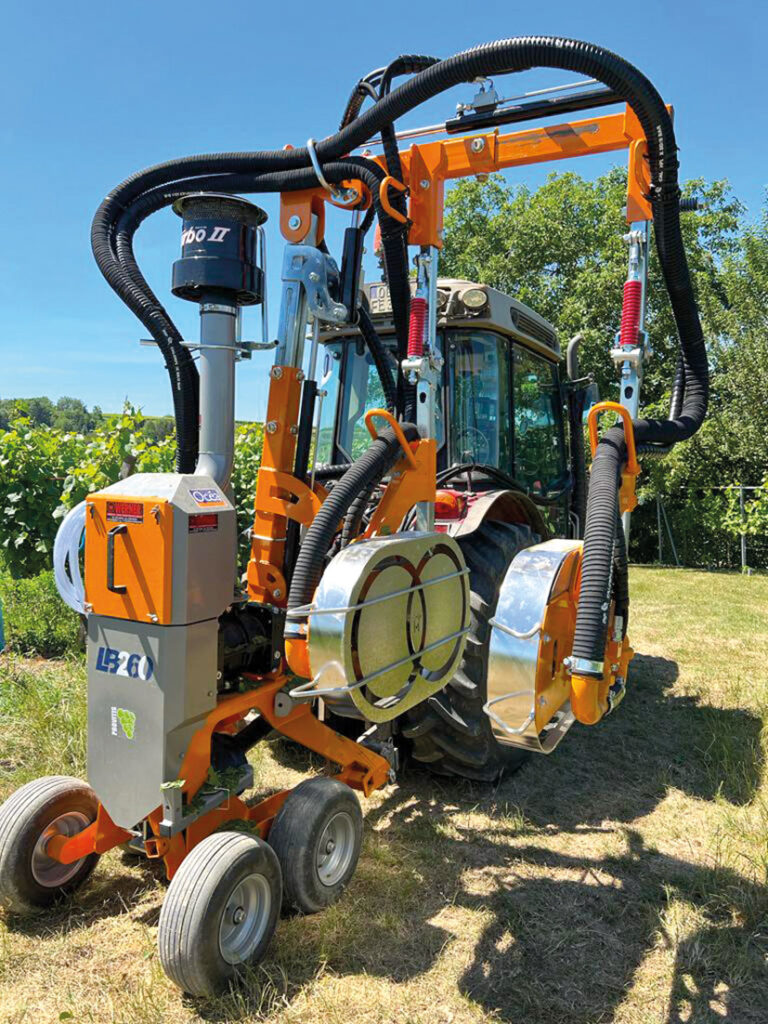
Naturally the smaller vineyards can’t justify expensive machinery purchases, and some are overcoming that barrier by either hiring from the likes of Vitifruit Equipment, sharing with neighbours, or getting the contractor in. With over 40 years’ experience, Vitifruit Equipment has seen how efficient many machines have become compared to hand work where one man, his tractor and machine can perform in a day what is otherwise done by many workers’ hands.
Having organised customer trips to Alsace, the Pfalz, Bordeaux, the Loire and so on, and discussed with vineyard owners how they cope, it’s plain to see that in recent years the access to foreign workers, students and even family members has shrivelled or become too expensive and they
now have had to rely on equipment to do the work and stay in business.
Multi-function is key
Typically, the types of equipment they are using are trimmers, leaf removers and tucking/tying-in kit.
One common feature which all of these need is a carrying frame, commonly called a mast. If the mast can be used as a support for many machines, so much the better. This is mounted at the front of a tractor with the use of a bracket as the interface between the two.
The mast enables the attached tool to be lifted to height and tilted so as to position it accurately by or over the vine row. If the mast is to be a multi-function carrier it has to be strong enough to carry the weight and versatile enough to perform all functions with ease. Mechanical trimming is fast with even an L-shape trimmer (half row cutting, one side and top) trimming 3–4ha a day; and a U-shape (both sides and top of one row) giving double the output. There are many models and manufacturers to choose from according to size, weight, strength and functionality.
Most trimmers have five rotary blades in the vertical position cutting 1.75m and two top horizontal rotors cutting 760mm. It’s possible to have more or fewer blades according to canopy height and width. Positioning the trimmer over the canopy requires moving and offsetting the mast away from the side of the tractor and adjusting the angle of cut, requiring the driver to be vigilant especially if motoring at speed and trying to avoid obstacles like uneven ground, tractor tyre ruts and rabbit holes.
The ability to make quick and accurate movements without damaging the canopy, wires or posts depends not only on the driver but also on the level of sophistication of the control system at his or her disposal. Some tractor control levers can be very ‘hit and miss’, whereas others with joystick controls are a lot better; however, if more demanding equipment is used requiring more hydraulic functions, then it is better to use the multi joystick controls supplied by the equipment manufacturer which also offers a smoother and more responsive control of all functions.
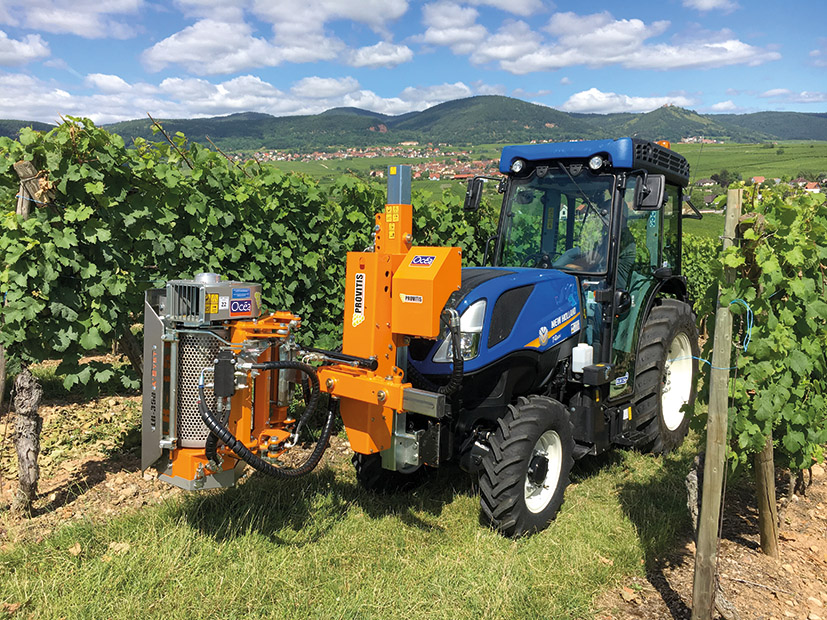
More airflow and sunlight
When leaf removing to allow more airflow and sunlight into the grape zone, it has become more commonplace to use a tool at the front of the tractor and typically on the ‘universal’ mast. The quality of work afforded by modern machines is equal to that done by hand.
There are two basic types of leaf remover; the first is normally used early to mid-season and has a fan which draws the leaves into two contra-rotating rollers or drums which pluck the leaves off.
The amount of plucking is altered by adjusting forward speed, fan speed and position against the canopy normally driving at 3–5kph. Some, like the Provitis LR350, can be fitted with an automatic system which moves in and out against the vine wall according to its density, saving the driver from having to slow down and steer in and away; it can also be fitted with a short cutter bar to trim away any branches which are hanging out.
The second type is pneumatic, and normally used mid to end of the season as it is better at dealing with denser foliage however both types are used the day before or on the day of harvest to make picking so much easier. Pneumatic types have had a mixed reputation as they can be rather aggressive however more modern types like the Provitis LB260 are safer as they have a higher airflow but it’s directed at the leaves through wider nozzles and the double contra rotating heads also increase efficiency.
They can be rear-mounted or have the rotating head at the front on the mast with the PTO driven compressor at the rear.
Tucking in
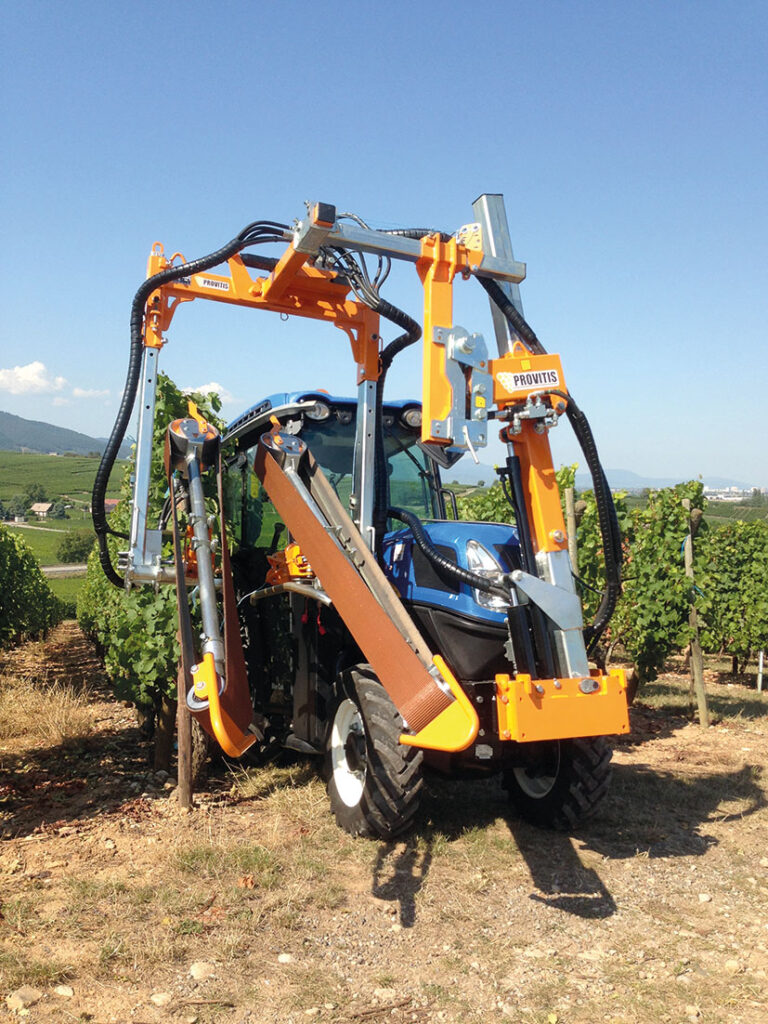
As the vine grows through the season it is also necessary to stop it flopping out into the alley by tucking it behind parallel wires or strings. Most vineyards have two sets of parallel wires set at different levels to deal with the vine as it grows. The wires are movable and are lifted up by hand under the vine growth so as to hold them in the vertical position and clipped into hooks on the posts.
The faster mechanical method is to use the Provitis PA 5000 which is fitted to the universal mast in front of the tractor and has two wide driven belts either side of the canopy which lift the vine growth up into the vertical as the tractor moves forward, while at the same time paying out string either side of the canopy to hold the growth into position. The driver pushes a button every couple of metres to fix a staple to hold the two strings together.
It’s normal to do this twice in the season at the same height as would be done with the parallel wires. With this system it is not necessary to have double parallel wires, although if they are already in place, they do not have to be moved; however, if a trellising system is planned, it’s not necessary to install the extra wires but only have the fruiting wire, top wire and two intermediates.
About our expert:
Vitifruit Equipment has been providing machinery solutions and customer service to the vineyard and fruit industries in the UK for over 25 years.
The company aims to help the customer to reduce production costs while increasing quality, yield and profitability with equipment that best suits their budget and specific location requirements.
Vitifruit Equipment is always sourcing new technology and products appropriate for viticulture and aims to provide a range of new machinery offering cutting edge technology for growers, so please look out for updates from the company via email, on its website, on Facebook and on X (formerly Twitter).
For any further information on any products for sale, hire, or demonstration, for machinery parts and yearly machinery servicing available, please contact the team at Vitifruit Equipment.
For more details click here and here.
Cost-effective canopy management
Contractor Andy Brown of Leaf Culture offers various operations within vineyards including the use of the ERO Professional double-sided defoliator. This has proved highly efficient and cost effective as he says it can cover 20–25 acres per day with a skilled and experienced operator, and has multiple benefits.
“Using mechanical operations can provide a more accurate and cost-effective way of managing the vine canopy throughout the summer growth period, whereas labour costs and work rates can vary depending on foliage cover. It is key to get on top of your canopy management as soon as flowering has finished. As the fruit develops this will encourage spray penetration through the canopy wall which will assist in prevention of any potential diseases developing, it is important throughout fruit growth to keep this area as clean and aerated as possible which will help to enhance crop,” explains Andy.
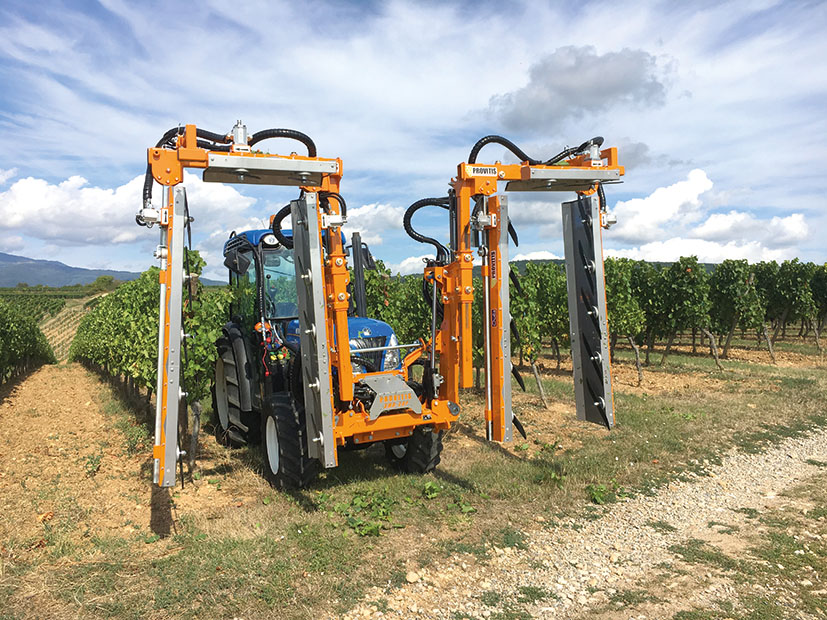
Andy has contracted into both large and smaller companies throughout the fruit and vine industry for over 25 years across the South East, and uses his knowledge gleaned over this period to carry out mechanical operations to date with efficiency and attention to detail – experience, he says, that you can only gain in the field over time.
Read more machinery news
